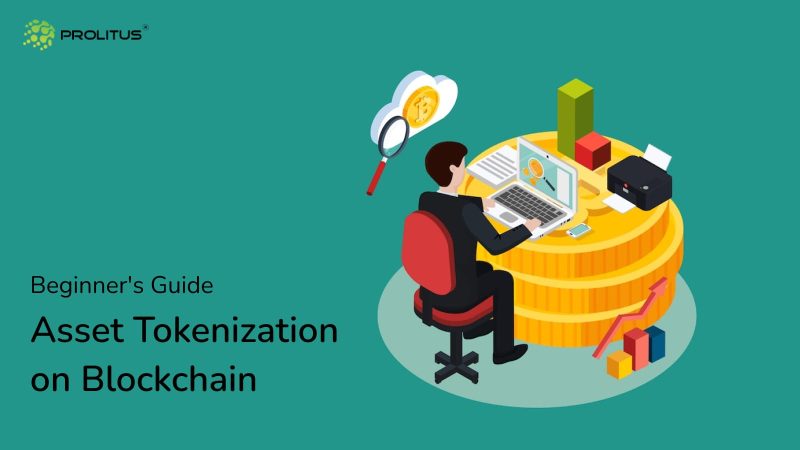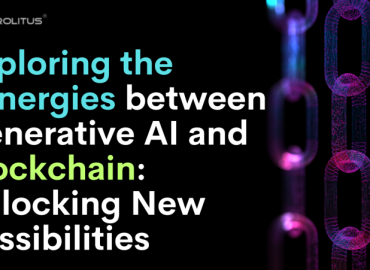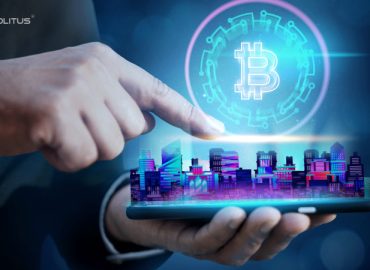As per the latest report by leading firms like BCG and ADDX, asset tokenization on blockchain will witness an exponential rise into a $16.1 trillion business opportunity by the year 2030.
In simple terms, the tokenization of assets refers to the process of transforming assets on a blockchain network. Where one can tokenize all sorts of assets like art, real estate, physical commodities, securities, and virtual assets like NFTs. Superficially, tokenization of assets involves digitizing tangible as well as intangible assets before modifying them into tokens that are finally stored over the blockchain.
How Does Asset Tokenization Work?
If you are wondering how to tokenize an asset, you must first understand the pivotal role smart contracts play in transforming real assets into digital assets.
Smart contracts are self-executing documents that back your digital tokens. These contracts include all the terms and conditions of the parties’ agreement in the form of lines of codes existing on the blockchain network.
Asset tokenization on the blockchain is completed when the conditions in the smart contract are fulfilled. This is to make historical data and contractual terms available to the general public.
Only then do the digitized tokens offer accuracy, transparency, and overall efficiency to the investors and participants alike.
Types Of Tokens Used In Blockchain Tokenization
Following are the different kinds of tokens existing in the vast realm of
blockchain technology for each specific asset:
-
Tangible Tokens:
They contain assets in their physical form with a certain monetary value. People have started questioning how to tokenize physical assets as the popularity of tokenized real estate, gold, and other liquid assets is constantly rising.
-
Fungible Tokens:
These tokens include digital assets with equal value in the sense that, for instance, one Bitcoin is equal to only one Bitcoin.
-
Non-Fungible Tokens:
These tokens are non-interchangeable with unique attributes. Examples include digital artwork, sports collectibles, etc.
Benefits Of Asset Tokenization
Thanks to new capital formation techniques in this fast-paced world, asset tokenization on a blockchain has the following benefits:
Cost-effectiveness
Once assets are tokenized, the influence of and interference by intermediary bodies is removed. This leads to reduced fees, wider investment accessibility, and more overall clarity.
Immutability
All data existing on the data blocks of the blockchain system is secure from tampering and revision and thus immutable in nature. The records of transactions and information related to assets cannot be changed as they are accurately verified.
Transparency
To people apprehensive about why they should tokenize assets, we must outline that asset tokenization dramatically increases transparency since users themselves define the token attributes and embed their rights. They clearly get to know the terms and conditions of the parties with whom they are dealing.
Fractional ownership
The asset’s owner can conveniently divide it into the desired fraction of shares. Since one can still partially own the asset tokens after splitting them, a flock of investors gets attracted, thus leading to much more asset liquidity.
Improved liquidity
Asset tokenization on blockchain also helps in better liquidity as the transactional procedure gets more efficient and streamlined. The asset flow becomes more mobile as users have authority over the execution of their transactions through smart contracts.
Risks Related To Tokenized Assets
Even with the above-mentioned advantages, one must know about the cautionary aspects of blockchain-based asset tokenization:
Legal and regulatory challenges
Due to the borderless trait of tokenized assets, many countries do not have a formalized set of regulations regarding asset tokenization. Due to this, several issues spring up in the real-world execution of tokenized assets, like those related to existing technologies and regulatory issues. Thus, a section of users has second thoughts as to why they should tokenize assets.
Security issues
Like any other technology, blockchain-based asset tokenization is also vulnerable to online attacks. Given a satisfactory reduction in the rate of cybercrimes against blockchain technology, a much more reliable digital asset management system is the need of the hour. This is needed not only for managing regulative activities but also for safeguarding Asset Tokenization on Blockchain against cybercrimes.
How To Tokenize An Asset?
Now that you have an idea regarding the fundamentals of asset tokenization, let’s chart out the process of tokenizing assets on blockchain technology.
Step 1. Opting an asset
First off, you must determine what you want to tokenize. Experts suggest going for an asset that already holds a specific profitable market. In cases when your asset is less popular and evaluating it on your own seems backbreaking, we recommend you request an asset valuation from an auditing firm.
Step 2. Making a Business Roadmap
You must have a clear-cut roadmap for your business-related strategies. This would require you to contemplate the potential client base, income sources, and other relevant financing details.
Step 3. Developing the platform
This stage in the Asset Tokenization on Blockchain is one of the most crucial ones wherein you have to decide whether you want to develop the platform yourself with your own blockchain-related knowledge and coding skills or assign this job to professional blockchain developers.
Step 4. Learning About the Law
As a law-abiding citizen in the virtual financial world, you must know the ins and outs of the legalities and regulations related to blockchain technology as well as digital assets. You could also seek professional consultation with a seasoned legal advisor.
Step 5. Releasing a Whitepaper
Thereafter, you should create and publish a whitepaper wherein you explain the purpose behind creating your tokenized asset, its target audience, and what benefits it offers to potential buyers. You can support this information with relevant diagrams, statistics, and formulas.
Step 6. Pulling in Investors
Once you have tested the tokenized asset platform and released the whitepaper, you can begin attracting potential investors. Herein, your marketing and public relations skills make or break the deal and decide the fate of your Asset Tokenization on Blockchain.
And voila! You have learned how to tokenize an asset.
How can Prolitus help you with Assets Tokenization on Blockchain?
At Prolitus, our team of experts and industry specialists thoroughly guide you on how to tokenize physical assets as well as digital ones.
We assist our customers in the tokenization of real estate assets for worldwide sale and purchase. We even help in the tokenization of commodities like your art pieces for expanding your target audience and improving your business strategy.
Moreover, we take pride in our tokenization platforms services for tokenizing venture capital funds, renewable energy, and securities.
Along with consultation on utility assets tokenization, we here at Prolitus tell you how to monetize your physical assets like gold bars or vintage cars for maximum profits.
It is not a surprise that, as per the research and surveys conducted by global financial institutions like the World Economic Forum (WEF), a substantial section of our future economy would be governed by asset tokenization.
For those who are still struggling over the question of why they should tokenize assets, the same report indicates the growth of asset tokenization on blockchain to exceed $3.1 trillion by the year 2030.
A plethora of market areas has become more accessible to investors across the globe since tokenized assets are paving pathways for “digitally advanced borderless transactions”.
Thus, you should reap maximum benefits by hopping onto the bandwagon as, in all likelihood, Asset Tokenization on Blockchain will become a dominant, decisive, and defining instrument in the digital economy of the near future.





